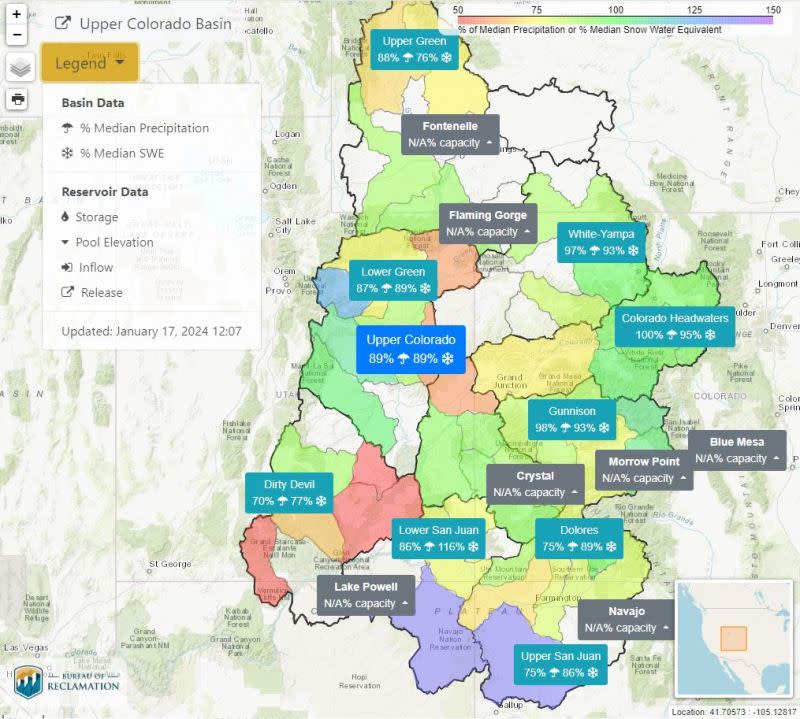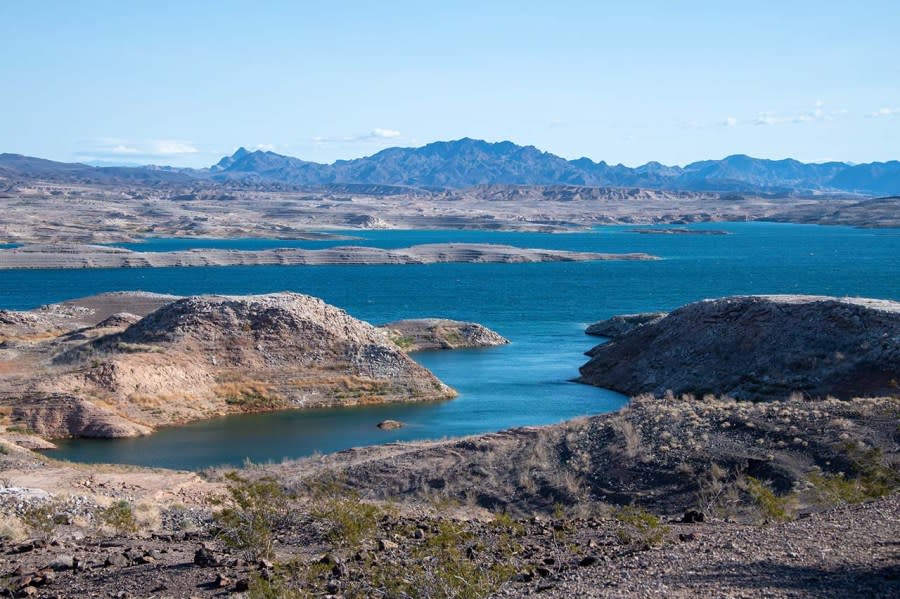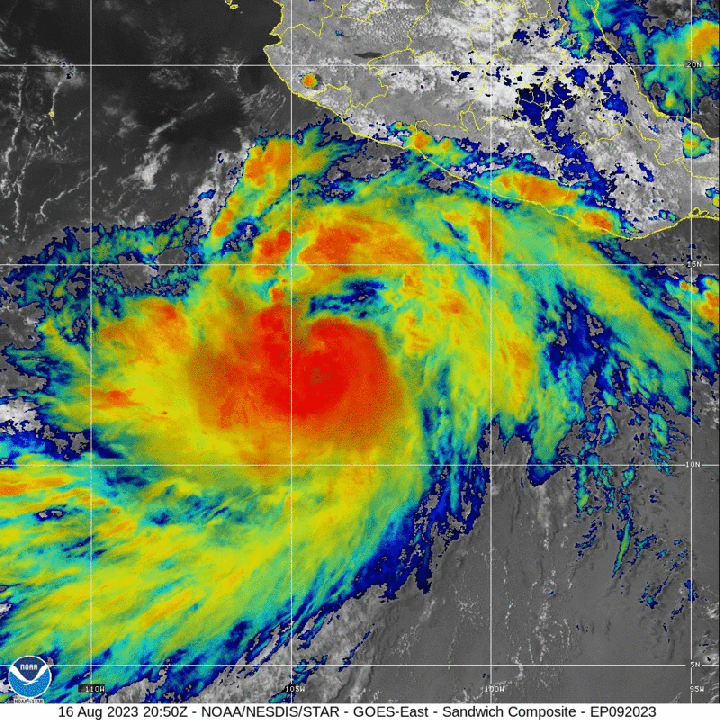Snowpack climbing in Rockies, but lagging behind 2023; all eyes on Colorado River

LAS VEGAS (KLAS) — Snow in the Rocky Mountains this week has brought some hope for another wet winter to feed the Colorado River.
Snow water equivalent (SWE) levels measured in the Upper Colorado River Basin are at 89% of average. And while that’s still below normal, it’s a big improvement over the past two months, when measurements lingered in the 60-74% range, dropping as low as 54% on Nov. 11 and as high as 87% on Dec. 11.

The heaviest snow levels were in the Colorado Headwaters region (95%) and the Lower San Juan range (116%).
A year ago this week, SWE levels reached 153% as atmospheric rivers funneled moisture into the Rockies, stocking the mountains with water that helped rebuild water storage in Lake Powell and Lake Mead over the past year.
What’s happening this year is falling far short of those levels, but more than 10 weeks remain until April 1 — the date that scientists see as the peak of snowpack levels, when there’s more melting than the amount of new snow that falls. Experts emphasize that it’s the April 1 snowpack level that really matters.
Impact on water supply
When that snow melts it flows down tributaries of the Colorado River, through dams along the way and eventually into Lake Powell. From there, water is released down the Grand Canyon and into Lake Mead. The “megadrought” that began in the year 2000 has reduced the amount of water in the entire Colorado River Basin, and climate experts expect that trend to continue — despite last year’s above-average snowpack, which hit 160% of normal.
All eyes are on the Colorado River again this year, and U.S. Bureau of Reclamation projections released on Tuesday indicated an expected drop at Lake Mead for the next two years.

“The water supply outlook has improved across the GB (eastern Great Basin) and UCRB (Upper Colorado River Basin) due to above-average precipitation during the first half of January. However, seasonal (April-July) water supply volumes remain below normal in the UCRB and near to below normal in the GB,” according to a Wednesday forecast issued by the Colorado Basin River Forecast Center, part of the National Weather Service. The eastern Great Basin does not contribute to the Colorado River.
The forecast also touched on the Lower Colorado River Basin (LCRB), which includes Nevada, Arizona and California.
“LCRB January-May volume forecasts are generally closer to normal and take into account the current El Niño, which is expected to continue through the winter and typically results in increased chances of wetter than average winter weather across the LCRB,” the forecast said.
It’s an early look at what climatologists have been trying to figure out since the summer, when El Niño conditions came back into forecasts again.
The Colorado Basin River Forecast Center takes a comprehensive look at current conditions for everything from SWE levels to soil moisture. See the full Water Supply Forecast Discussion.
Wet year, lower demand
One lesson learned over the past year is that hot weather in the Lower Basin is an increasingly important part of the equation. When it’s hot, Lower Basin states have higher demand for the water that they are legally entitled to under agreements that date back a century. But during wet weather, the demand drops and states are able to get by with less.

When Hurricane Hilary hit the West Coast in August 2023, it produced heavy rains that soaked California. As it moved inland as a tropical storm and continued to weaken, damaging rains reached Death Valley and Mt. Charleston. All that moisture in California changed demand significantly, and less water was released from Hoover Dam.
The Bureau of Reclamation is crafting a new master plan to manage dams along the Colorado River. The final plan could take a hard look at water consumption. Water agencies and tribal governments have cut deals with the U.S. government for short-term conservation efforts, but a more permanent solution might mean those efforts must continue.
The plan that helped bridge the water emergency was crafted by water officials in Nevada, Arizona and California. That agreement — along with the water from last year’s snowpack — bought time to have the new plan in place by the end of 2026.
For the latest news, weather, sports, and streaming video, head to KLAS.

